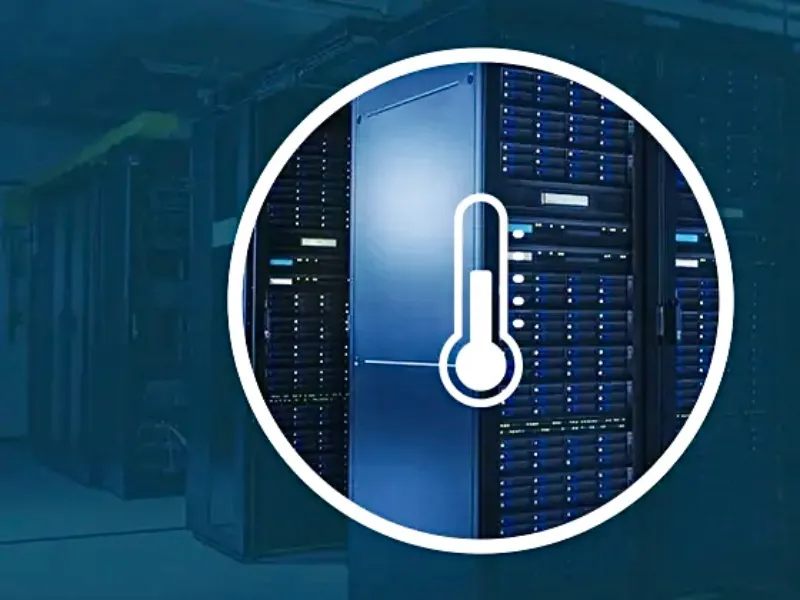- The ideal temperature for server rooms is 64°F and 80°F (18°C to 27°C), with the relative humidity between 45-50%.
- Server rooms are critical components of facility computing equipment. With the right sensor setup, you can safely maintain proper server room temperature.
If your organisation works with in-house servers, maintaining the ideal conditions in your server room is essential to keep your systems functioning at their best. Here’s why server room temperature control matters in a server room and the key considerations for maintaining optimal conditions.
Ideal server room temperature and humidity
The ideal temperature for server rooms is 64°F and 80°F (18°C to 27°C), with the relative humidity between 45-50%. Maintaining the ideal server room humidity level and temperature is critical to keeping your equipment in optimal condition.
If your space is too hot, your IT systems could overheat and fail to perform. Running equipment in an environment that is too cold requires more energy and puts unwanted stress on your systems.
If the humidity in your server room skyrockets, condensation may form that can damage and corrode your equipment. Overly dry spaces can also cause harm to your sensitive server components by creating electrostatic discharge.
Also read: How do load balancer servers optimise network traffic?
Temperature and humidity monitoring systems
To get an idea of your current server room temperature requirements, measure the temperature in several places to record any hot spots you have. The larger your server room is, the harder it is for the ideal server room temperature to be in all areas. These hot spots show where your current cooling methods are inefficient and where your equipment may be overheating.
Many devices and tools are available that will help you keep track of the server room temperature, even when you are away from the office. For example, electronic thermometers will automatically take and record the temperature throughout the day so that you can review it later.
Additional tools needed to monitor and manage the ideal temperature for a computer server room include:
1. Environmental sensors: You’ll need to know the temperature throughout your server room. Again, temperatures may vary throughout the space, so it is essential to have sensors in different areas.
2. Dry and wet bulb thermometers: A dry bulb thermometer senses the ambient air temperature in a room, while a wet bulb thermometer aims to gauge moisture content in the air.
3. Dehumidifiers: These systems monitor humidity and remove water particles from your server room’s air to keep conditions drier.
4. Dew point meters: A dew point meter will tell you the temperature when condensation begins forming in your server room.
Also read: When the management server fails: A digital disaster
Server room temperature maintenance
Once you have determined your ideal server room temperature and the weak spots, there are several things you can do to maintain this temperature.
1. Airflow planning: Strategically setting up the cooling ducts in your server room can help you reach a consistent temperature with optimal airflow throughout the space.
2. Multiple thermometers: You’ll want to monitor the temperature in different parts of your server room to ensure there is consistency and no hot spots.
3. Reliable AC units: Your air conditioning plays a massive part in supporting proper server room temperatures. Be sure to keep up with maintenance schedules and perform repairs promptly.
4. Generators: A backup power source will save your servers from an outage by keeping cooling systems in operation until the main power source returns.

